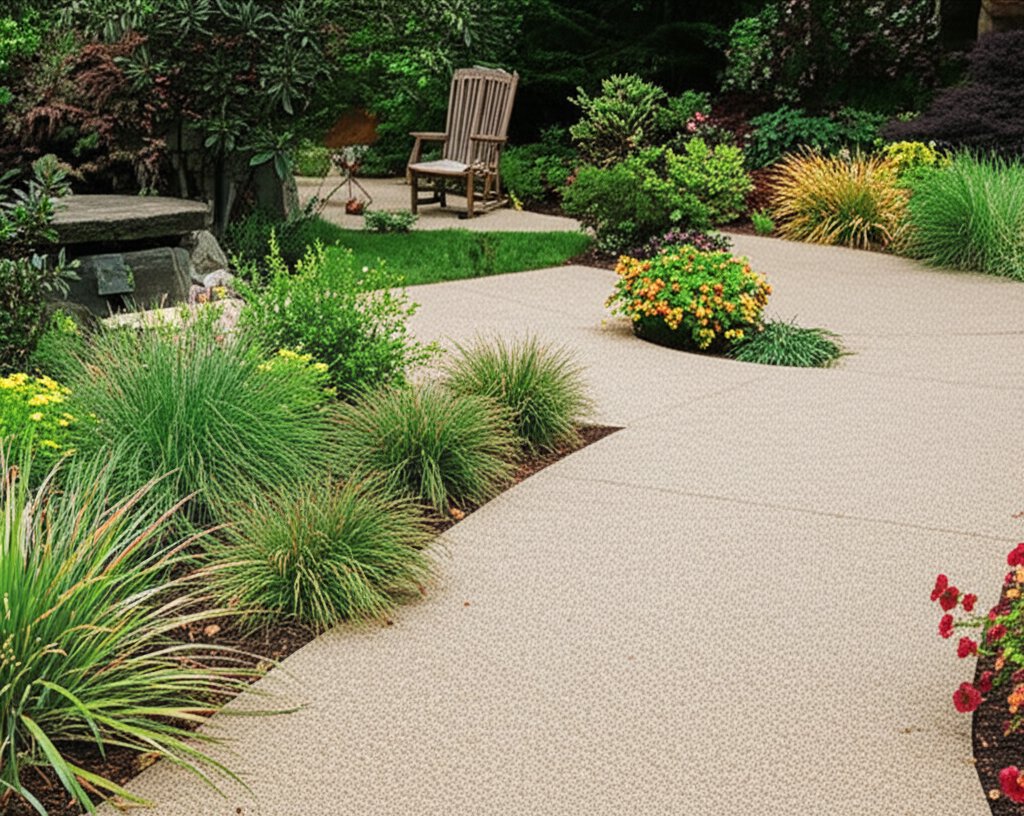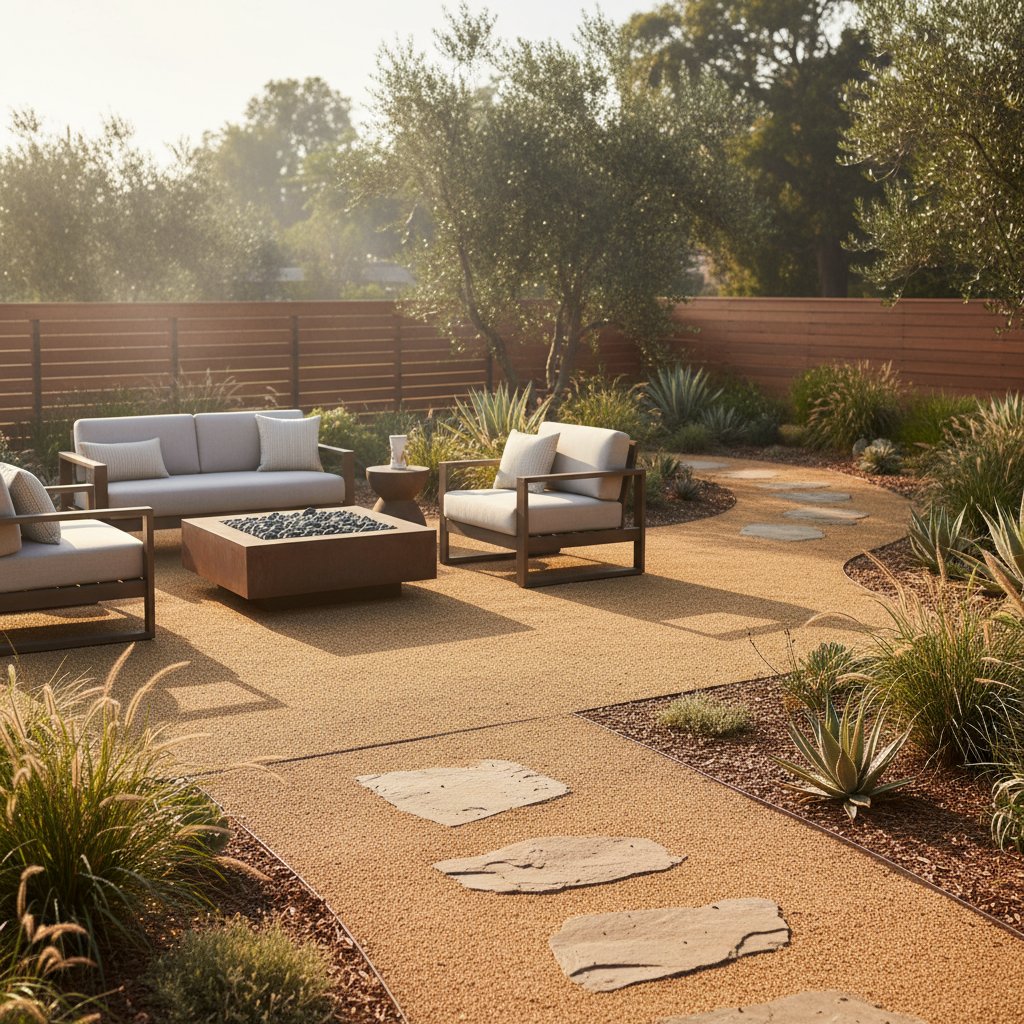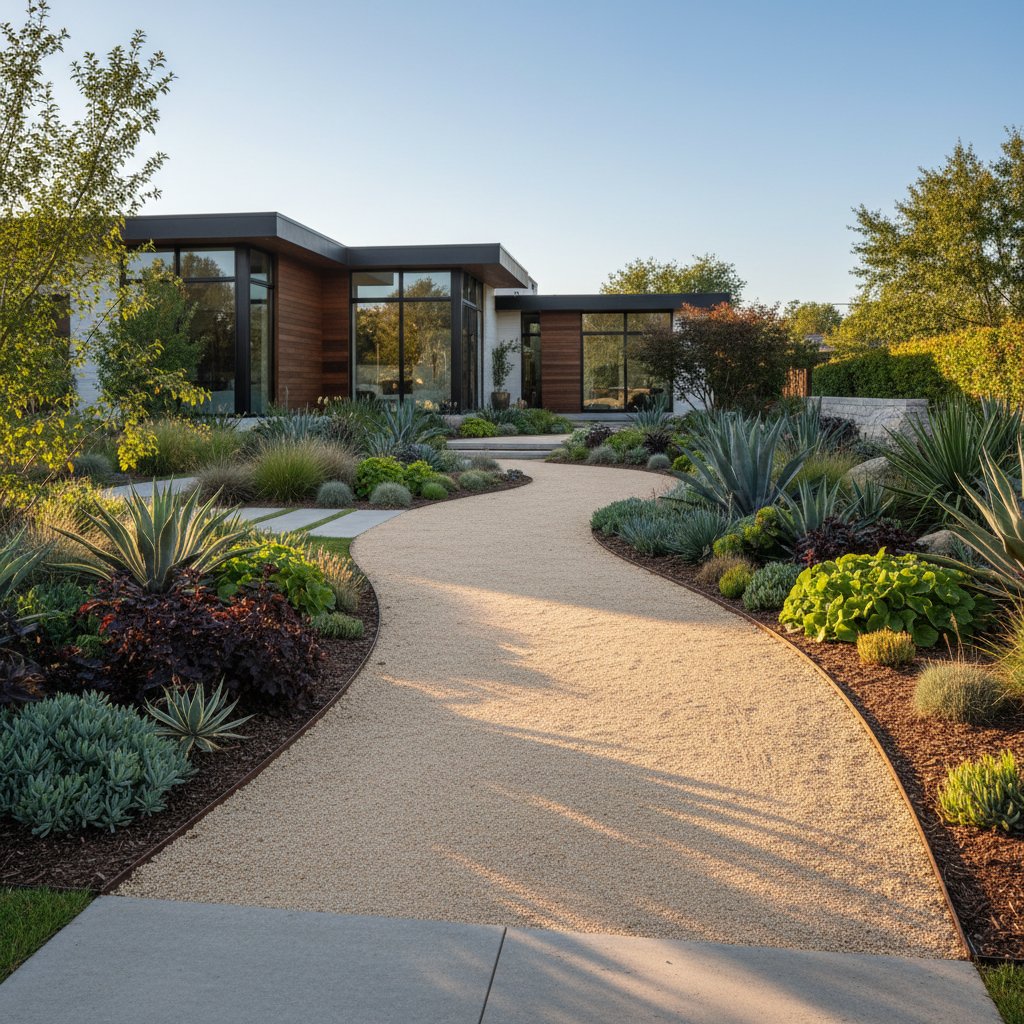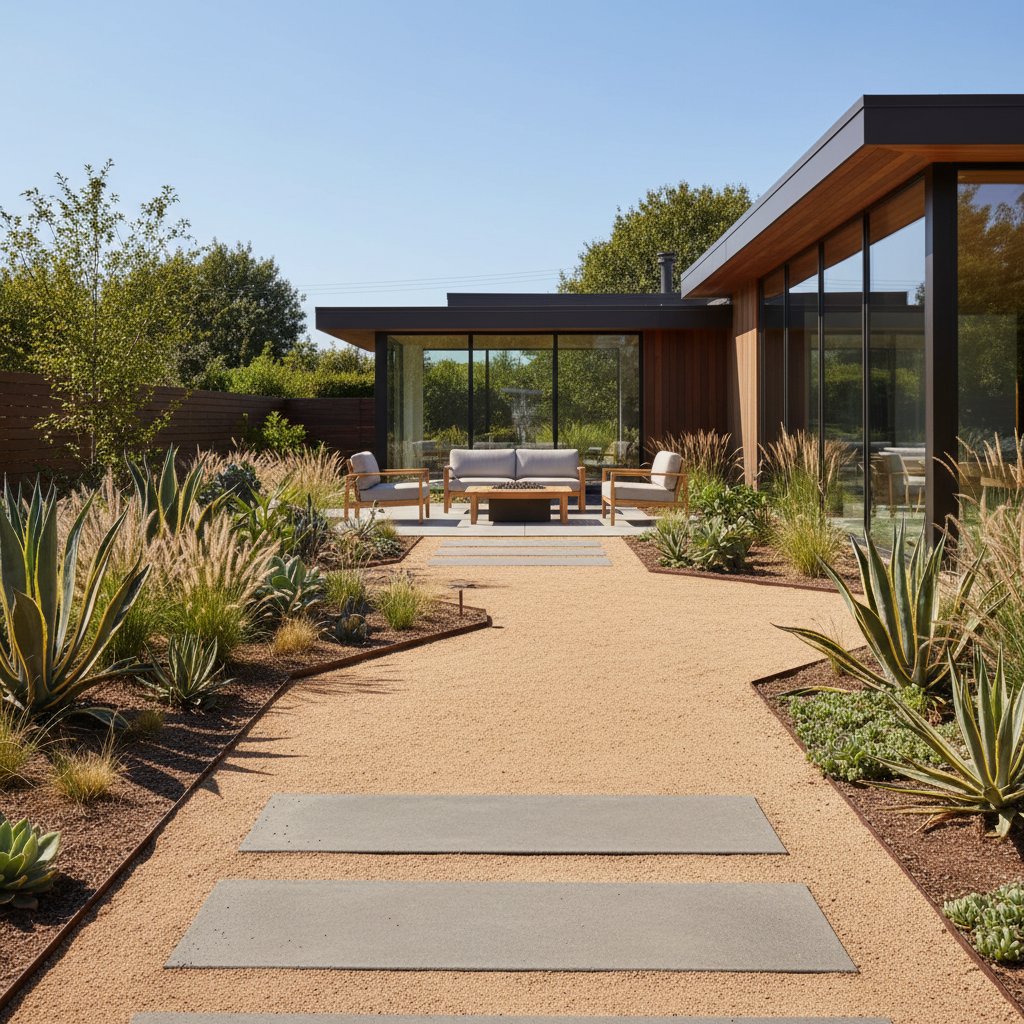Decomposed Granite as the Leading 2025 Budget Hardscape Option
Homeowners often face the challenge of balancing ambitious outdoor visions with limited funds. Decomposed granite addresses this tension effectively, providing a material that combines visual elegance with practical economics. Known simply as DG, it gains traction for creating functional spaces that enhance property value without straining finances.
What Is Decomposed Granite?
Decomposed granite consists of weathered granite fragments that resemble a mix of fine gravel and sand. This composition yields a textured surface that appears both rugged and sophisticated. Options in hues such as warm gold, neutral tan, subtle gray, and rich brown integrate seamlessly with various landscapes.
When properly compacted, DG creates a firm base that permits water infiltration, minimizing water pooling and erosion risks. Professionals apply it to construct walkways, patios, driveways, and edging for planting areas. Its organic character harmonizes with vegetation and terrain, distinguishing it from the stark uniformity of concrete or interlocking pavers.
Economic Advantages of Decomposed Granite
Cost comparisons reveal decomposed granite's edge over traditional alternatives. Material expenses for DG typically range lower than those for poured concrete or natural stone pavers, often by 40 to 60 percent per square foot. The lightweight nature of DG reduces transportation and labor demands, further lowering installation fees.
Homeowners benefit from phased implementation, allowing incremental investments. Start with a basic pathway to connect key yard zones, then expand to a full patio in subsequent seasons. This approach distributes expenses and permits adjustments based on evolving needs.
Maintenance contributes to long-term savings. Refresh worn sections by raking the surface and adding a thin layer of fresh DG, a task that requires minimal tools and time. Such simplicity avoids the recurring costs associated with repairing cracks in concrete or resetting shifted pavers.
Evaluating Your Outdoor Area
Examine your yard's current layout before procuring decomposed granite. Identify high-traffic routes and potential gathering spots to guide placement decisions. Consider environmental factors, such as soil drainage and sun exposure, to ensure optimal performance.
Key questions include:
- Which paths do family members or guests follow most frequently?
- Do certain spots retain moisture after rainfall?
- How might DG accommodate furniture arrangements or new plantings?
Create a rough sketch to map out proposed features. For inclined terrains, install metal or plastic edging to secure the material and prevent spreading. These preparatory steps enhance durability and visual coherence.
Customizing Appearance and Texture
Decomposed granite provides a unified backdrop that invites personalization. Select a golden shade to evoke sunny vibrancy in arid settings, or opt for gray tones to complement sleek contemporary elements like steel accents or timber structures.
Incorporate contrasting elements for depth. Embed larger boulders or slate tiles within DG paths to guide movement and add focal points. Surround elevated planters with DG to unify the composition, or layer it beneath outdoor seating for a cushioned, natural feel.
The material's gentle traction suits leisurely strolls through bloom-filled gardens, encouraging pauses to appreciate seasonal changes.
Step-by-Step Installation Guide
DIY installation proves feasible for many, though hiring experts guarantees precision. Begin by clearing vegetation and debris from the site, then excavate to a depth of four to six inches. Lay a two-inch foundation of coarser crushed rock to promote drainage and stability.
Spread decomposed granite in two- to three-inch lifts, compacting each layer thoroughly with a tamper or rented plate compactor. Lightly dampen the surface before compaction to facilitate binding without creating mud. For high-use areas, mix in a stabilizer additive at a rate of five to ten percent by volume to boost resistance to wear.
Allow the completed surface to cure for 24 to 48 hours before regular use. The result offers a resilient yet yielding platform that retains its earthy allure over years.
Ongoing Maintenance Practices
Sustain decomposed granite surfaces through routine care. Rake or broom the area weekly to redistribute material and eliminate debris. Following storms, inspect for erosion and replenish displaced sections promptly.
Recompact annually in trafficked zones to preserve evenness. Weeds seldom emerge in dense DG, but pull any sprouts manually to maintain tidiness. The permeable design channels water to roots below, fostering healthier surrounding flora and conserving resources.
Enduring Appeal for Modern Landscapes
Decomposed granite endures due to its alignment with practical demands. It delineates zones with subtlety, fostering fluid transitions between hard surfaces and greenery. This integration promotes a harmonious environment that evolves with the seasons.
Over time, DG develops a patina that enhances its integration, free from the vulnerabilities of cracking or fading seen in rigid materials. It transforms routine yard tasks into pleasurable experiences, from tending flowers to hosting casual dinners.
Enhancing Daily Outdoor Enjoyment
A completed decomposed granite installation reshapes interactions with your property. Defined routes encourage exploration, while open patios invite relaxation. Neutral palettes amplify the vibrancy of foliage and decor, creating dynamic vistas.
This investment yields satisfaction through achievable enhancements that prioritize both utility and grace. Decomposed granite delivers enduring outdoor refinement, layer by layer.



